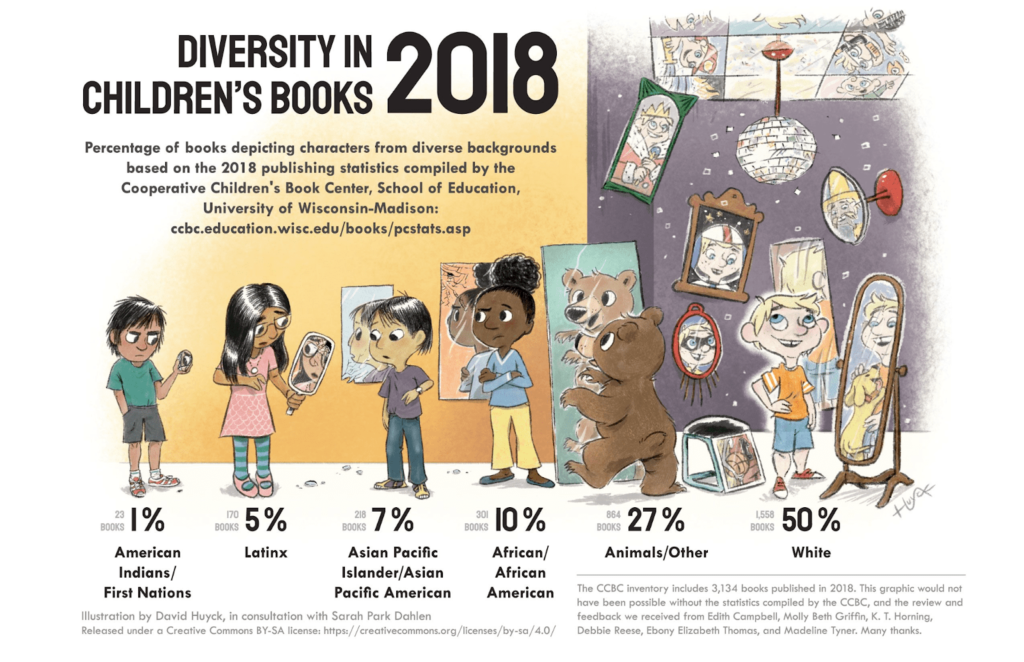Back in 2015, we came across an infographic done by Sarah Park Dahlen and David Huyck representing the diversity of characters in children’s books. At that time, over 73% of characters were white. In their updated infographic (seen below) from 2018, that number had dropped to 50%. However, the group that saw the biggest gains from that drop was Animals/Other, where it more than doubled from 12.5% to over 27%. With these numbers, it’s unsurprising to learn that many students never encounter a book with characters that look like them over their entire K-12 education journey.

Huyck, David and Sarah Park Dahlen. (2019 June 19). Diversity in Children’s Books 2018. sarahpark.com blog. Created in consultation with Edith Campbell, Molly Beth Griffin, K. T. Horning, Debbie Reese, Ebony Elizabeth Thomas, and Madeline Tyner, with statistics compiled by the Cooperative Children’s Book Center, School of Education, University of Wisconsin-Madison: https://ccbc.education.wisc.edu/literature-resources/ccbc-diversity-statistics/books-by-about-poc-fnn/. Retrieved from https://readingspark.wordpress.com/2019/06/19/picture-this-diversity-in-childrens-books-2018-infographic/.
At Shoelace we believe strongly that students need to see themselves reflected within the content they learn from. Dr. Rudine Sims Bishop described this “windows, mirrors and sliding glass doors.”
Books are sometimes windows, offering views of worlds that may be real or imagined, familiar or strange. These windows are also sliding glass doors, and readers have only to walk through in imagination to become part of whatever world has been created or recreated by the author. When lighting conditions are just right, however, a window can also be a mirror. Literature transforms human experience and reflects it back to us, and in that reflection we can see our own lives and experiences as part of the larger human experience. Reading, then, becomes a means of self-affirmation, and readers often seek their mirrors in books. (Bishop R. S. (1990). Mirrors, windows, and sliding glass doors. Perspectives, 6(3), ix–xi.)
However, having content that provides those opportunities is not enough—the content also must be highly engaging. Just because something reflects your experience doesn’t mean you will connect with it if it is dry and boring. All of this is why we are investing heavily in the development of our content library.
In the summer of 2021, we started by doing a sample audit of our existing content. Since then, we have expanded our audit and have used everything we are learning to create guidelines for our content writers. Through these audits, we have identified gaps in our content and are working diligently to fill them.
It is our goal that every player of Shoelace, regardless of reading comprehension level, where they live, or how they see themselves, will encounter mirrors, windows and sliding glass doors within our content library.